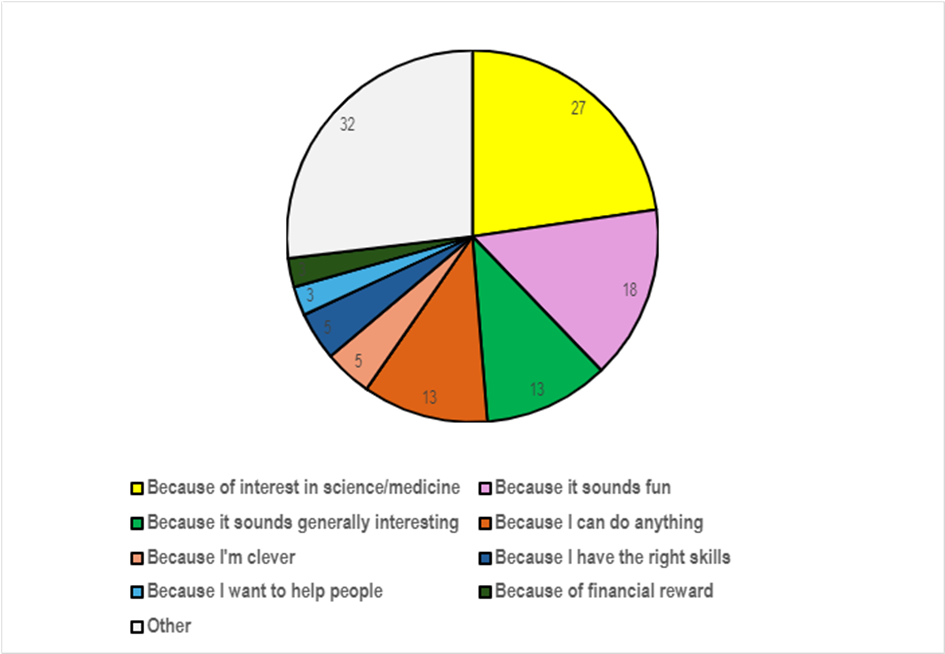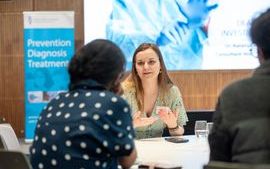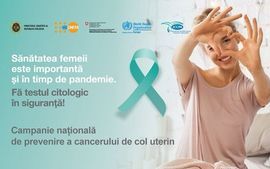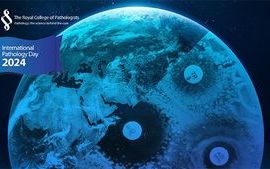- Published:
- 20 January 2025
- Author:
- Caroline Cartlidge and Debamita Bhattacharjee
- Read time:
- 5 Mins
Caroline Cartlidge and Debamita Bhattacharjee previously reported on the histopathology exhibition at Thackray Museum of Medicine. Now that the exhibition has closed, they report on the impact it had on highlighting pathology as a career to the public.
We worked with the team at the Thackray Museum of Medicine in Leeds to create a histopathology exhibition entitled ‘Behind the Microscope’, which ran from February 2023 to August 2024. The exhibition included associated family workshops and dissection demonstrations, for example, hearts for Valentine’s Day.
We focused attention on celebrating the exciting role of histopathologists and emphasising the important (but often not widely understood) role of pathology. In fact, as part of the pre-exhibition survey among visitors, 94% of respondents said they had ‘heard of’ pathology but less than 20% knew a lot about pathology and histology and only 25% were aware of pathology playing a part in their own past diagnoses.
The museum exhibition aimed to develop medical capital in the general population to help them understand what histopathology is and the role of those that work in this specialty. Furthermore, the exhibition aimed to empower visitors to feel confident to explore careers in pathology and identify the relevant skills.
Based on the expected audience, it was essential that the exhibition made pathology interactive and engaging for children. Therefore, cartoon-style images by the talented artist, Molly Pukes were included. As part of the exhibition, we obtained insightful feedback on the perceptions of pathology from the public.

On leaving the exhibition, visitors were encouraged to interact by sharing their answers to the feedback question "Do you think you could be a pathologist?". Around 500 responses were obtained, with 275 offering details beyond yes or no. The answers could roughly be split into those who would be interested in being a pathologist (119) or already were a pathologist, medical student or worked in a related STEM field (18) and those who wouldn’t want to be a pathologist (138), with reasons given (Figure 1).
Despite, understandably, not everyone expressing a desire to become budding pathologists, many of the visitors still picked up on the skills necessary to be a pathologist. Others left with a growing understanding of the role but were not interested for other reasons. For example, "I have good pattern recognition but unfortunately this stuff grosses me out" and "very interesting but I’d never be able to identify anything as it all seems to look the same, but I do love the idea". These comments demonstrated the insightful and informed responses the attendees gave to the question of a career choice in pathology, following their engagement with this exhibition.
Comments relating to whether people would be interested in becoming pathologists or not are listed in Table 1. Overall, the positive comments expressing interest in pathology related to pre-existing interest in science and medicine, new interest attracted by the exhibition and its fun appearance, and recognising that they possessed requisite skills, such as pattern-recognition and attention to detail. Those responding ‘no’ to whether they could be a pathologist also offered multiple reasons. Moreover, the exhibition attracted medical students and pathology professionals alike, providing them with an opportunity to express pride in their work.
Table 1: Examples of comments from visitors identifying themselves as wanting to be a pathologist, not wanting to be a pathologist or already being a pathologist.
| Yes – Reasons to want to be a pathologist |
|
References to science and medicine: “I enjoy learning more about medicine and the human body.” “You can help cure diseases and also I am fine around blood and other gross things so think I can enjoy it.” “I’ve looked at my cheek cell under a microscope and it was cool.” Interest attracted by the exhibition: “It looks interesting.” “Might be fun to do it.” “Sounds interesting.” Pathology sounds fun: “The job could be fun you could meet new people and make friends.” Possession of specific skills: “I’m good at looking for details.” “I think that I would enjoy it. I like to find patterns.” “I am curious and interested and good and clever and good at reading.” “I am very curious.” |
| No – Reasons for not wanting to be a pathologist |
|
Too squeamish: “I don’t like looking at human body parts and blood.” “I have a fear of doctors and dentists.” “Terrible with hospitals.” “I can’t even look at fake blood. I hate it!” Perceived to be too much hard work or not clever enough: “It seems like a very hard job that I don’t think I could do.” “I am thick as mince.” “I failed chemistry A-level – twice.” Other preferred career in mind: “I prefer music, I want to be a rockstar.” “I’m a footballer.” “I might be an author.” “I want to be a historian.” More interested in other science careers: “I would rather be a surgeon.” “I would rather make prosthetic limbs.” “I will be an equine vet.” |
| ‘Already am’ responses |
|
“I already am a histopathologist! I have the best job in the world.” “I am a pathologist and it is amazing.” “100% I already do it.” |
- Interdisciplinary collaborations, such as those with artists, are a great way of generating excitement in a new way. Pathology can be seen as an art as well as a science! The use of characters and a storyline in the form of comic strips was highly effective in engaging a younger audience.
- Working with museums, such as the Thackray Museum of Medicine, can help to reach a larger audience of all ages and diverse backgrounds. Moreover, highlighting the importance of pathology in the wider context of other medical history displayed in this museum contextualises the central role of this specialty in current and historical medical practice.
- Pathologists enjoyed having a space to share their pride and excitement in what they do.
- A single public engagement event can lead to the generation of future follow-on events on a similar theme (e.g. the heart and eyeball dissection sessions we led as pathologists for the general public to follow and attempt practically at the Thackray Museum of Medicine), which also received very positive feedback.
We would like to thank the Thackray Museum of Medicine for their support in promoting histopathology. In particular, we would like to thank museum curator, Jack Gann, for his dedicated work on the exhibition, including compiling the visitor feedback, and Molly Pukes for their eye-catching artwork.
Return to January 2025 Bulletin






